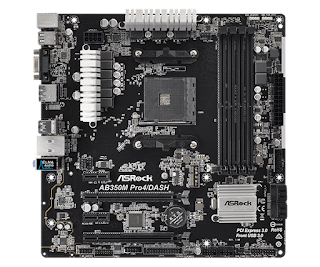공지사항
태양광은 온도가 높을 수록 발전 효율이 내려간다! 열려라~ 야광문~
- 공유 링크 만들기
- X
- 이메일
- 기타 앱
태양광 모듈은 반도체다.
당연히 온도의 영향을 지대하게 받는다.
물론 이는 과거부터
태양광 모듈과 모듈 간 왜 10mm의 공간을 두는거죠? (tistory.com)
다룬 문제라,
지금은 많이 개선 되었다고는 하나,
그럼에도 온도에서 자유로울 수는 없다.
그래서 온도계수라는 단어가 나오는 것이고.
이를 논리적으로 설명을 하라고 한다면...
태양 전지에 대한 열 효과의 영향 조사: 종합 검토 | 지속 가능한 에너지 연구 | 전문(全文 (springeropen.com)
Frontiers | An Enhancement of the Solar Panel Efficiency: A Comprehensive Review (frontiersin.org)
나도 자신 없다.
(귀찮다.)
다만, 단순하게 설명하자면,
모듈 특성 상 온도가 올라가면, 전압이 떨어진다.
고로, p = iv라는 간단한 공식에 따라,
생산 전력이 떨어지는 것을 알 수 있다.
이에 살을 붙여서 설명하자면,
The efficiency of solar cells, a critical factor in converting sunlight into electricity, is influenced by various factors. Material properties, particularly the bandgap energy of the semiconductor material, play a crucial role in determining the solar spectrum portion that can be absorbed (Kumar et al., 2023). Semiconductors with smaller bandgaps can capture a broader range of photons, including those with lower energy, but this may result in lower efficiency due to thermal losses. Additionally, higher carrier mobility within the material enhances charge separation and collection efficiency (Li et al., 2023). The relationship between bandgap energy and efficiency is intricate and depends on the specific semiconductor materials used. In solar cells, bandgap energy refers to the difference between the valence band and the conduction band, defining the range of photons the material can absorb. Materials with smaller bandgaps have a lower energy threshold for absorbing photons, allowing them to capture a broader spectrum, including lower-energy photons like infrared light. However, there are trade-offs associated with this characteristic. For instance, Amorphous Silicon (a-Si) serves as an example of a material with a smaller bandgap, around 1.7 eV. While a-Si can capture a broad range of photons, its efficiency in converting sunlight into electricity tends to be lower. This is attributed in part to higher thermalization losses, where excess energy, especially from photons with energy less than the bandgap, is lost as heat. In contrast, Monocrystalline Silicon (c-Si) exemplifies a material with a larger bandgap, approximately 1.1 eV. Although c-Si absorbs a narrower range of photons compared to a-Si, it tends to have higher conversion efficiency for the photons it does capture (Kumar et al., 2023; Li et al., 2023). In summary, the selection of bandgap in solar cell materials involves a trade-off between capturing a broad range of photons and achieving high conversion efficiency. While materials with smaller bandgaps can capture a broader spectrum, they may face challenges related to higher thermal losses, resulting in lower overall efficiency. On the other hand, materials with larger bandgaps may have a narrower absorption range but can achieve higher efficiency for the absorbed photons. The specific values and characteristics can vary among different semiconductor materials.
Temperature is a significant factor impacting solar cell efficiency, as elevated temperatures can lead to reduced performance, attributed to increased electron–hole recombination and resistance—a key thermal effect explored in this review (Wright et al., 2023; Failed, 2023a). The incident angle of sunlight and its intensity also contribute to efficiency variations. Solar tracking systems optimize incident angles, while sunlight intensity, varying with location and time of day, affects available energy for conversion (Almenabawy et al., 2023). Surface reflection and absorption are managed through anti-reflective coatings applied to solar cell surfaces, minimizing reflection and maximizing photon absorption. Manufacturing and design factors are critical, with defects and contaminations during manufacturing potentially hindering performance. Quality control processes are essential in addressing these issues. Additionally, solar cell design, encompassing layer arrangements, significantly impacts efficiency, with ongoing innovations continually enhancing performance (Carlson, 2023).
걍 하나의 현상이라 이해하면 된다.
과학은 별거없다.
눈에 보이는 현상이다.
이를 해결 하기 위해서,
과거에는 물을 뿌리거나,
냉각장치를 달자고 하지만,
개인적으로는 그것보다는 모듈 개량이 더 낫다고 생각하고,
아직까지 이런 현상이 나오는 제품은 옛날 제품일 가능성이...
지금은 우주에서도 태양광 발전을 하는데,
공사비 팍 팍 무치면,
뭐든 극복이 된다.
마지막으로,
순간 발전량으로 이게 정상인지 비정상적인지,
특히나 현장 점검 없이는 알 수가 없다.
그러니,
발전시간이 표준 잣대로 작용이 되는데,
아래 링크를 참조하면 그나마 안심 할 수 있다.
실시간 우리지역 태양광 발전량(발전시간) 모니터링 (xehostel.blogspot.com)
아니면, 반대로 열을 더 뻗거나.
음... 내가 만든 발전소는 요즘...
못 먹어도 여름 하루 5시간 이상씩 꾸준히 나온다.
하루 6.9시간 나오는 곳도 있는데,,,
태양광 인버터 고장 overvoltage(과전압) 원인과 해결방안 feat 고혈압 (xehostel.blogspot.com)
다 장단점이 있다.
난 갠적으로 안 멈추고, 꾸준히 발전하는 것을 선호한다.
1년 평균도 그 곳이 더 높고.











댓글
댓글 쓰기